American Samoa is a small archipelago of volcanic islands located in the South Pacific Ocean. It is home to an incredible array of birds, some of which are endemic to the islands and can only be found in the wild there.
From brightly-colored parrots to seabirds and unique wetland species, American Samoa’s avian diversity is something to behold. From its lush rainforests to its stunning coral reefs, American Samoa is a haven for bird-watchers and wildlife enthusiasts alike.
1. Polynesian Starling
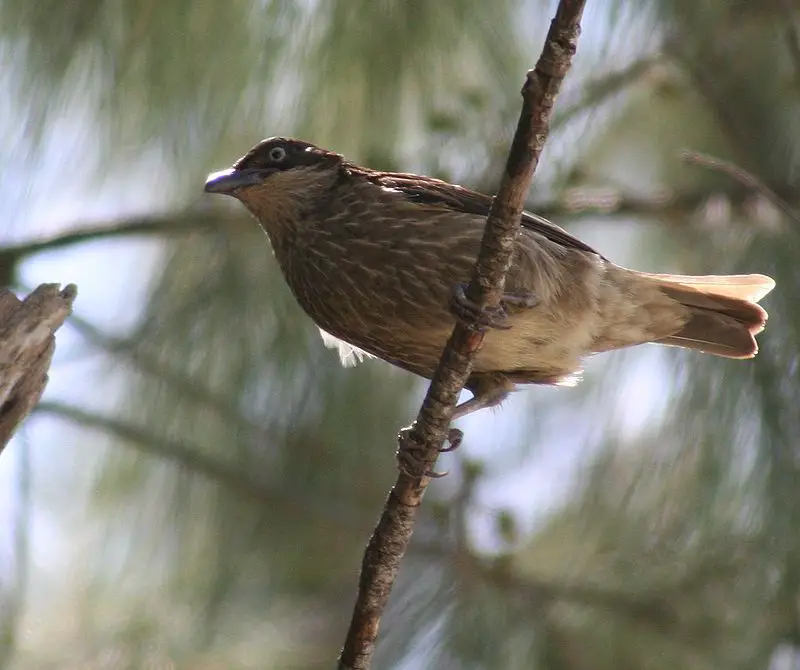
The Polynesian starling is a species of bird from the family Sturnidae. It is found in several places in Oceania, such as Samoa, Fiji, Niue and Tonga. Its habitats are subtropical or tropical dry forests and moist forests.
It varies in appearance depending on its location with some subspecies being darker colored than others.
This starling has a distinct call which can be described as raspy yet melodic at times.
Despite its wide range across the Pacific Islands it continues to face threats from human activities such as deforestation and agricultural conversion of land into plantations for crops like sugarcane that reduce their natural habitat .
Conservationists have called for increased protection efforts to ensure this beautiful species survives into future generations.Scientific classification:
| Kingdom | Animalia |
| Phylum | Chordata |
| Class | Aves |
| Order | Passeriformes |
| Family | Sturnidae |
| Genus | Aplonis |
| Species | A. tabuensis |
2. Polynesian Wattled Honeyeater
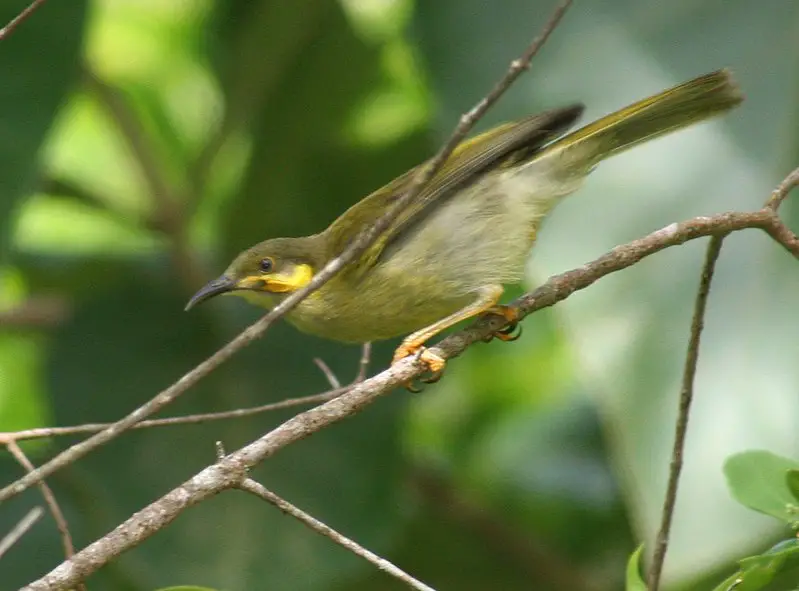
The Polynesian wattled honeyeater is a species of bird in the Meliphagidae family and can be found on American Samoa, Fiji, Samoa, Tonga and Wallis & Futuna Islands.
It was previously thought to be part of the same group as other wattled honeyeaters such as Fijian Wattles Honey Eater or Kikau but it has since been identified that they are all separate species.
They have small bills, stocky bodies with brown plumage on their back while greyish-white below along with yellow eyes.
In terms of habitat these birds prefer open forests, coconut plantations or mangroves which consist mainly of nectar-bearing flowers for them to feed upon.
They usually build their nests in dense foliage near water sources like streams or rivers making them hard to spot by potential predators due to its camouflage capabilities.
All in all this unique little creature is an important member within the Pacific Island avifauna providing us with a glimpse into our past ecology and natural beauty.Scientific classification:
| Kingdom | Animalia |
| Phylum | Chordata |
| Class | Aves |
| Order | Passeriformes |
| Family | Meliphagidae |
| Genus | Foulehaio |
| Species | F. carunculatus |
3. Samoan Starling
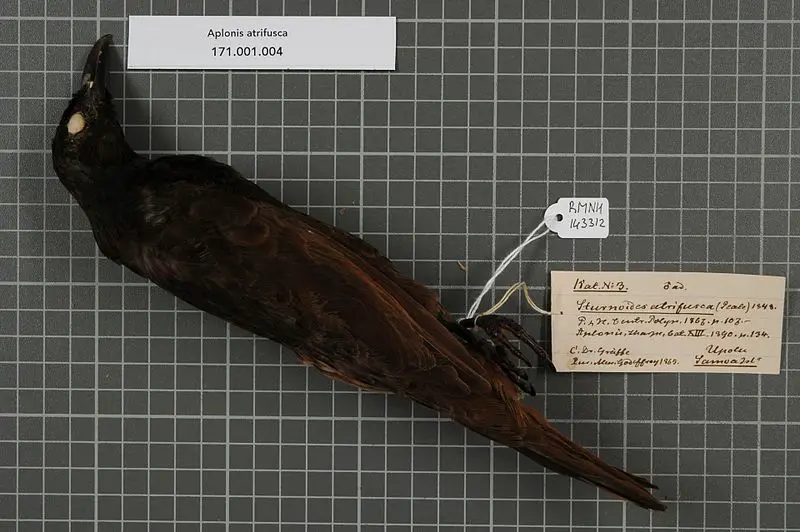
The Samoan starling is a glossy, dark brown bird with a long bill and belongs to the Sturnidae family. It can be found in tropical moist forest on volcanic islands around the Samoan Islands.
These birds are more common than Polynesian starlings which have similar habitats; they produce various whistles and calls throughout the day.
They mainly feed on insects but will also eat fruit for sustenance during their migratory season from October to April when food sources may become scarce.
The nest of these birds is usually made up of twigs woven together in trees or other foliage nearby depending on availability.
Their conservation status has been listed as Least Concern due to its large population range across multiple islands making them likely not vulnerable to extinction anytime soon.Scientific classification:
| Kingdom | Animalia |
| Phylum | Chordata |
| Class | Aves |
| Order | Passeriformes |
| Family | Sturnidae |
| Genus | Aplonis |
| Species | A. atrifusca |
4. Many-Colored Fruit Dove
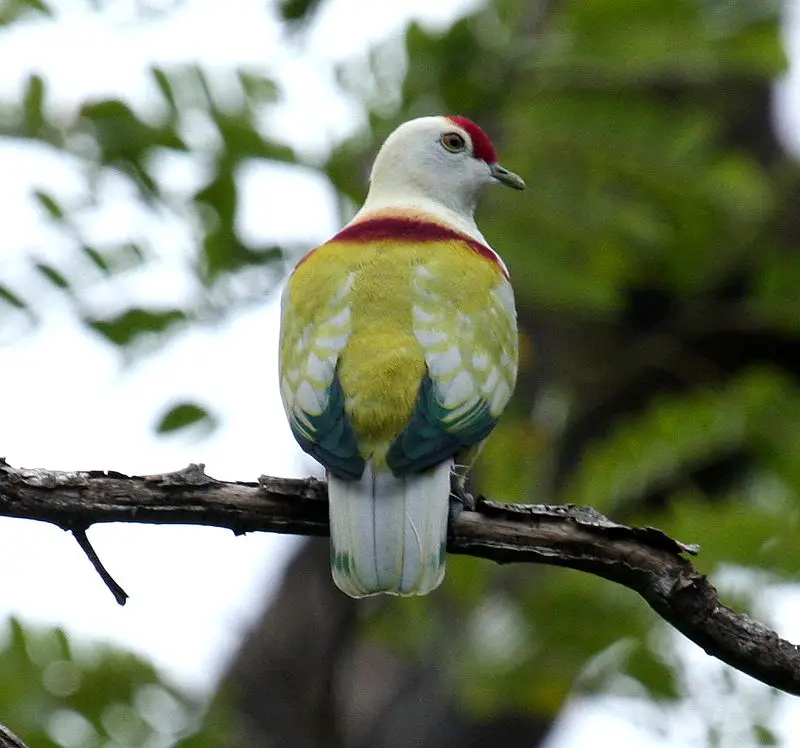
The many-colored fruit dove, also known as the manuma in Samoan language, is a species of bird belonging to the family Columbidae.
It inhabits subtropical or tropical moist lowland forests on islands in Fiji, Samoa and Tonga.
The birds are usually spotted foraging for food among trees during the day but nest at night.
They feed mainly on fruits from various tree species with some insects supplementing their diet occasionally.
These beautiful doves have brightly coloured feathers ranging from white to yellowish green depending upon its age and gender; they make attractive pets when tamed correctly.
With proper conservation efforts we can ensure these stunning creatures remain part of our environment for years to come.Scientific classification:
| Kingdom | Animalia |
| Phylum | Chordata |
| Class | Aves |
| Order | Columbiformes |
| Family | Columbidae |
| Genus | Ptilinopus |
| Species | P. perousii |
5. Cardinal Myzomela
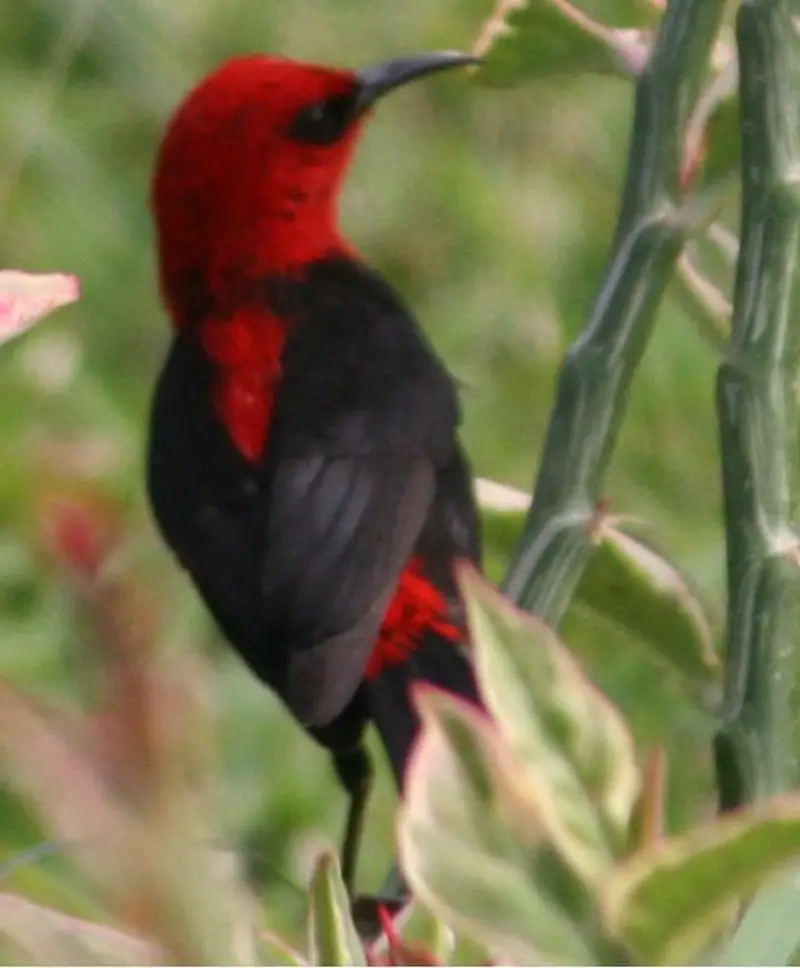
The Cardinal myzomela is a stunning species of bird found in American Samoa, New Caledonia, Samoa, Solomon Islands and Vanuatu.
The male has beautiful scarlet plumage which gave it its name.
It inhabits subtropical or tropical moist lowland forests and mangrove forests. This adaptable species also lives on some Micronesian islands such as Yap.
Its diet consists of nectar from flowers and insects that are caught while foraging among the branches of trees in these habitats.
A shy but energetic bird, the cardinal myzomela often forms flocks with other birds to look for food before returning to roost at nightfall.Scientific classification:
| Kingdom | Animalia |
| Phylum | Chordata |
| Class | Aves |
| Order | Passeriformes |
| Family | Meliphagidae |
| Genus | Myzomela |
| Species | M. cardinalis |
6. Crimson-Crowned Fruit Dove
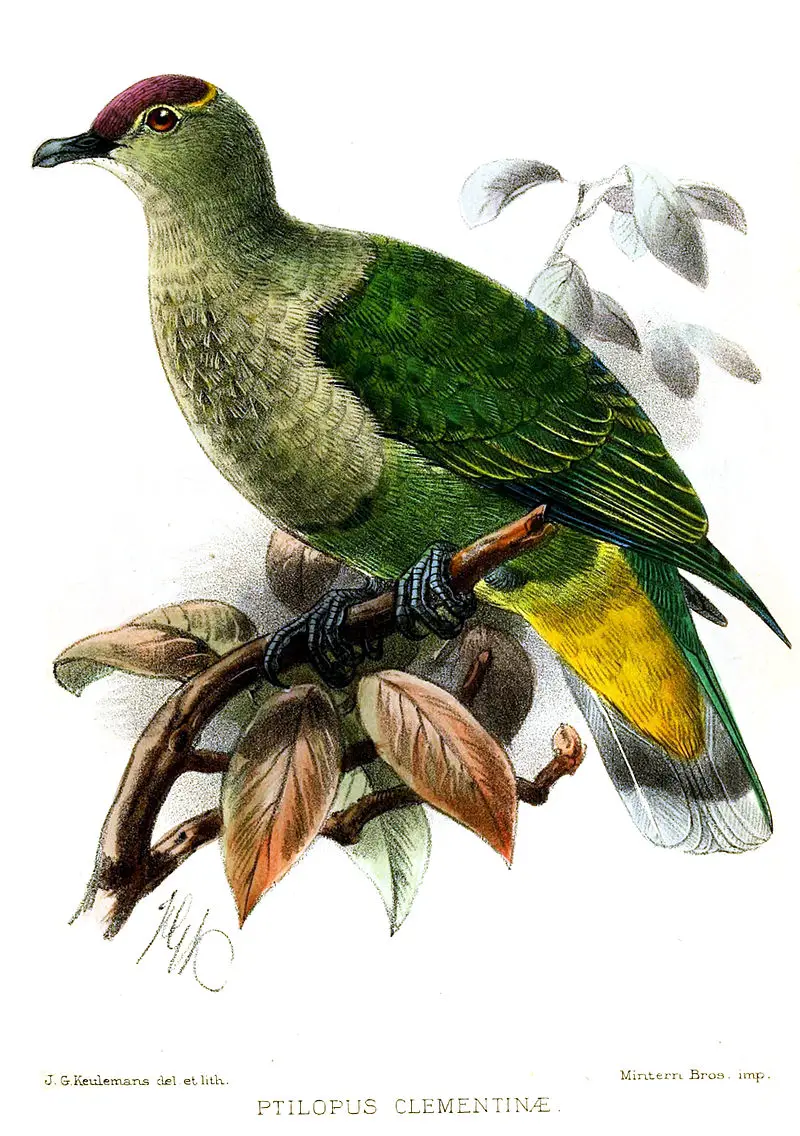
The Crimson-crowned Fruit Dove is a stunning species of bird that belongs to the Columbidae family.
It can be found in several locations throughout American Samoa, Fiji, Marshall Islands, Niue, Samoa Tonga and Wallis & Futuna Islands.
These birds usually inhabit subtropical or tropical moist lowland forests as well as mangrove areas. They are easily identified by their striking plumage – with shades of purple on top of a bright red crown.
Until 2016 both Purple-capped fruit dove and Kosrae fruit dove were considered subspecies but have since been classified as separate species.
This beautiful bird may be small but it certainly has an impressive presence.Scientific classification:
| Kingdom | Animalia |
| Phylum | Chordata |
| Class | Aves |
| Order | Columbiformes |
| Family | Columbidae |
| Genus | Ptilinopus |
| Species | P. porphyraceus |
7. Mao
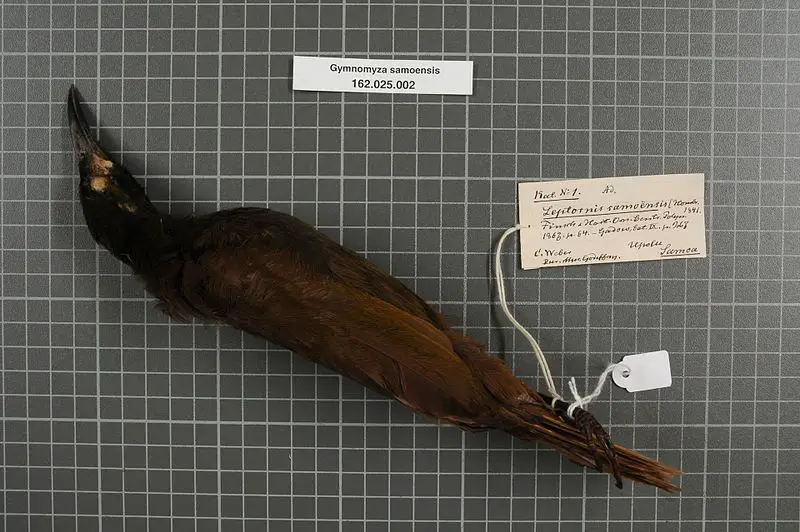
The Mao bird is a beautiful passerine belonging to the genus Gymnomyza in the honeyeater family Meliphagidae.
Its plumage consists of dark colors, ranging from blackish on its head and breast to an olive-green color found on its wings and body.
It has a unique greenish mark under each eye which adds more beauty to this species. Endemic only to Samoa Islands, it measures 28–31 cm (11–12 inches) long making it quite large compared to other Honeyeaters of similar size.
Sadly enough, due mainly human activities such as habitat destruction, hunting and introduction of non-native predators;the Mao Bird is categorized as endangered by IUCN Red List since 1994 and conservation efforts are needed now more than ever before in order for them not go extinct.Scientific classification:
| Kingdom | Animalia |
| Phylum | Chordata |
| Class | Aves |
| Order | Passeriformes |
| Family | Meliphagidae |
| Genus | Gymnomyza |
| Species | G. samoensis |
8. Pacific Imperial Pigeon
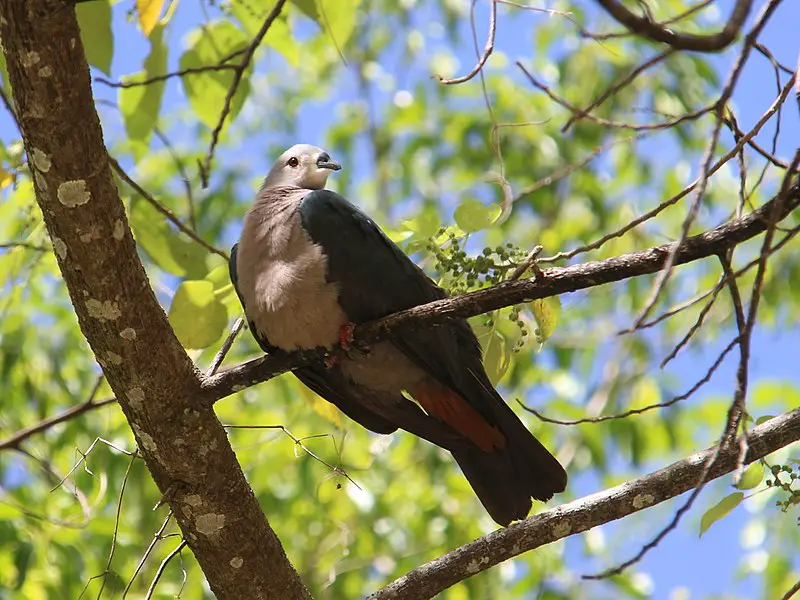
The Pacific imperial pigeon is a beautiful species of bird found in many islands located throughout the South Pacific. It has an iridescent green body, white neck and head with black markings around its eyes and beak.
Its wings are reddish-brown with a large area of blue on each side near the tips. This majestic creature was formally described by Johann Friedrich Gmelin in 1788 and it can grow up to 11 inches long with a wingspan reaching 33 inches wide.
The diet of this amazing avian consists mainly of fruits like figs, mangos, breadfruit, guavas as well as seeds which they search for while flying low over forests or woodlands.
As one can imagine these birds have become very important culturally to many people living within their range due to their beauty and stunning colors.Scientific classification:
| Kingdom | Animalia |
| Phylum | Chordata |
| Class | Aves |
| Order | Columbiformes |
| Family | Columbidae |
| Genus | Ducula |
| Species | D. pacifica |
9. Tongan Ground Dove
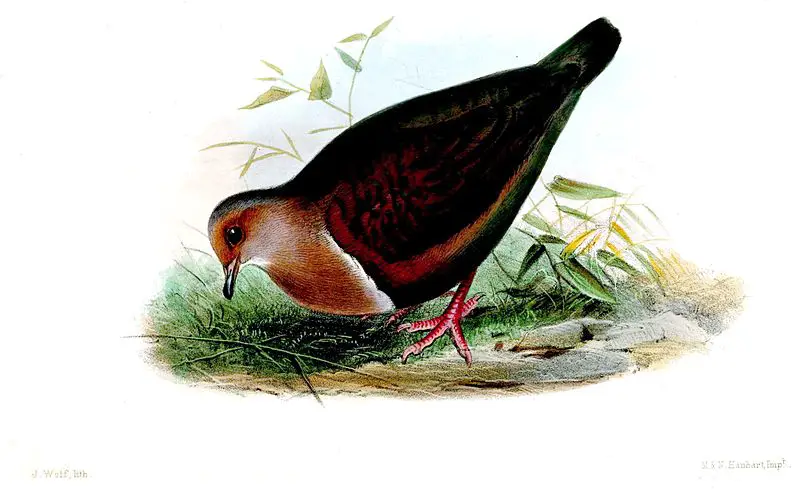
The Tongan ground dove is a species of bird in the Columbidae family, found mainly in American Samoa, Fiji, Samoa, Tonga and Wallis and Futuna Islands.
It has an attractive grey-brown colouring with white patches on its wings and back.
Its natural habitat is subtropical or tropical moist lowland forests but unfortunately due to habitat loss this species is now considered threatened.
This shy yet friendly bird was formerly classified under the genus ‘Alopecoenas Sharpe’ which means it may have been placed into another family at one point before being returned to its rightful place within Columbidae.Scientific classification:
| Kingdom | Animalia |
| Phylum | Chordata |
| Class | Aves |
| Order | Columbiformes |
| Family | Columbidae |
| Genus | Pampusana |
| Species | P. stairi |
10. Henderson Fruit Dove
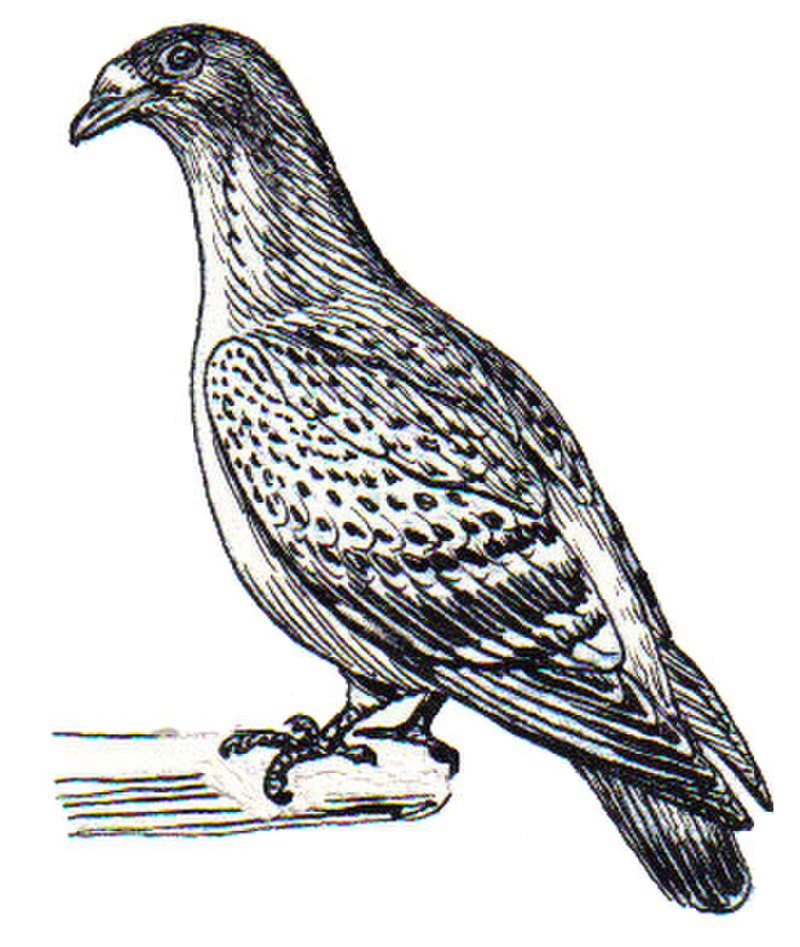
The Henderson fruit dove is an endemic bird found only in the South Pacific Pitcairn Island group, specifically on Henderson Island. It has a scarlet-colored head and thrives in tropical moist lowland scrub forest habitats.
Sadly, it once shared these forests with three other now extinct species of pigeon.
This beautiful creature can often be seen flitting through its natural environment or perched atop tree branches while searching for fruits to feed upon as part of its diet.
The future of this unique bird remains uncertain due to destruction of habitat by invasive plant species and hunting from introduced mammals such as rats and cats.
Preservation efforts should be made so that future generations may continue to observe this amazing animal among their native island home.Scientific classification:
| Kingdom | Animalia |
| Phylum | Chordata |
| Class | Aves |
| Order | Columbiformes |
| Family | Columbidae |
| Genus | Ptilinopus |
| Species | P. insularis |
Also Featured In: Beautiful Birds Found in Pitcairn Islands,
11. Wattled Honeyeater
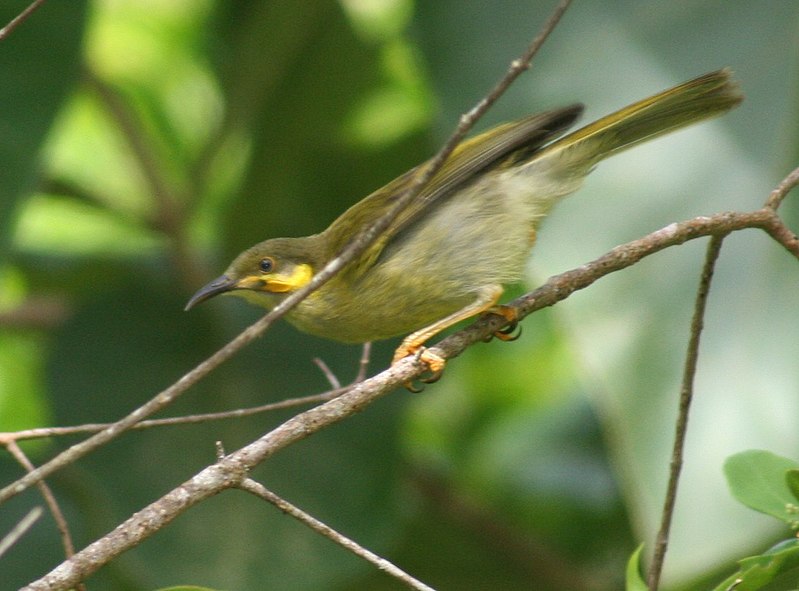
The Wattled Honeyeater is a genus of bird in the Meliphagidae family. These birds are found mostly in Australia and parts of Indonesia, New Guinea and the Solomon Islands.
They have distinctive wattles on their forehead that give them an interesting appearance. The wattles can be purple or yellow, depending on species. Their diet consists mainly of insects but they also enjoy nectar, fruit and small lizards.
In some areas they form flocks to search for food while elsewhere they live solitary lives near bodies of water such as streams or ponds where there is plenty to eat.
They build cup-shaped nests out of twigs which lay up to four eggs at one time; these hatch after about two weeks incubation period by both parents.
With its striking features and bright colours, the Wattled Honeyeater makes an attractive addition to any garden full with wildlife.Scientific classification:
| Kingdom | Animalia |
| Phylum | Chordata |
| Class | Aves |
| Order | Passeriformes |
| Family | Meliphagidae |
| Genus | Foulehaio Reichenbach, 1852 |